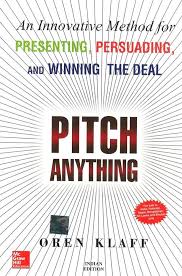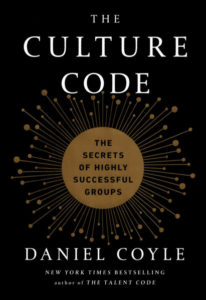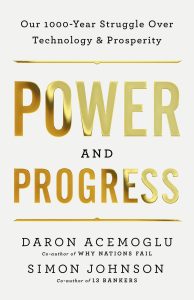

Review of Pitch Anything
With Pitch Anything, the author wants to teach the readers frame control which will help to overcome the challenges in life and career.
The Problem
There is a fundamental disconnect between the way we pitch anything and the way it is received by our audience. Our most important messages have a surprisingly low chance of getting through because our highly evolved neocortex, which is full of details and abstract concepts, tries to persuade the croc brain, which is afraid of almost everything and needs very simple, clear, direct, and non-threatening ideas, to decide in our favour.
Thus, the message should not trigger fear alarms. Make sure it gets recognised as something positive, unexpected, and out of the ordinary – a pleasant novelty.
Characteristics of Croc Brain
The croc brain (the source of your target’s first reaction to your pitch) is
1. Going to ignore you if possible.
2. Only focusing on the big picture and needs high-contrast and well-differentiated options to choose between.
3. Emotional, in the sense that it will respond emotionally to what it sees and hears, but most of the time that emotional response is fear.
4. Focused on the here and now with a short attention span that craves novelty.
5. In need of concrete facts by looking for verified evidence and dislikes abstract concepts.
The Solution
The author introduces his STRONG method to deal with the problem:
1. Setting the frame,
2. Telling the story,
3. Revealing the intrigue,
4. Offering the prize, and
5. Getting a decision
Framing
No situation has real meaning until you frame it. Frames are mental structures that shape the way we see the world and put relationships in context. The frame you put around a situation completely and totally controls its meaning. But remember, you are not the only one framing.
The types of frame are
1. Power frame.
The opposing frame is the power-busting frame. It involves perpetrating a small denial or act out some type of defiance.
2. Time frame.
Use the time constraining frame to counter this frame.
3. Analyst frame.
The opposing frame is intrigue frame. The intrigue story should have these elements: brief, and the subject must be relevant to your pitch; you need to be at the centre of the story; there should be risk, danger, and uncertainty; there should be time pressure and there are ominous consequences if action is not taken quickly; there should be tension (obstacles preventing success); and there should be serious consequences.
We can also use moral authority frame to disrupt this frame.
4. Prize frame.
This frame entails positioning yourself as the prize by making the buyer qualify himself to you. This frame can deal with threatening and fast-approaching frames that are likely to push you into a low-status position.
In general, some acts of defiance and denial, combined with humour, are extremely powerful in maintaining frame control and in reinforcing high status.
Human Nature
The first impression we make on another person is based on that person’s automatic calculation of our social value.
3 fundamental behaviours of human beings:
1. We chase that which moves away from us.
2. We want what we cannot have.
3. We only place value on things that are difficult to obtain.
Pitching Time: 20 minutes
1. Introduce yourself and the big idea – 5 minutes.
First, let the target know that this presentation would not be long, just about 20 minutes. Introduce yourself briefly, highlighting your greatest success most relevant to the pitch.
Use “Why Now” frame in the big idea. You may use the 3 market forces or trending patterns that you believe are important. These forces are economic forces, social forces, and technology forces
To introduce the big idea (1 minute), the following template can be used:
For [target customers] who are dissatisfied with [the current offerings in the market]. My idea/product is a [new idea or product category] that provides [key problem/solution features]. Unlike [the competing product], my idea/product is [describe key features].
2. Explain the budget and secret sauce – 10 minutes.
Pique the curiosity of your target. Curiosity derives from an information gap – the difference between what you know and what you want to know.
Besides that, you should also create some tension by using the push/pull pattern.
3 Offer the deal – 2 minutes.
Explain in clear and concise terms what the audience will receive.
4. Stack frames for a hot cognition – 3 minutes.
4 frames to stack in quick succession: intrigue frame, prize frame, time frame, and moral authority frame. Do not let the target falls into cold cognition.
Other tips
If you think you will start a meeting from the beta position, always be on time for the appointment. Otherwise, you are giving away power.
Remove neediness from your pitch by
1. Wanting nothing;
2. Focusing only on things you do well,
3. Announcing your intention to leave the social encounter.
Conclusion
Pitching depends heavily on the method and not how hard you try. A good pitch is not about procedure; it is about getting and keeping attention. Own the room with frame control, drive emotions with intrigue pings, and get to a hookpoint fairly quickly.
The techniques can be practised and mastered. The author has provided the guide in the final chapter. We need to remember that the crucial components of every pitch are humour, fun and light-heartedness.
One-sentence summary for Pitch Anything
Pitching should be purpose-driven, but also fun at the same time.
Quotes
- Most intelligent people take great pleasure in being confronted with something new, novel, and intriguing.
- Money is never a prize, it’s a commodity, a means for getting things done.
Rating
[usr 3]
Interested in Pitch Anything?
You may get the book from through the link below*.
Get the print book from Shopee here
Get the ebook from Shopee here
*These are affiliate links and I might earn a small amount if you purchase the book through the links.



[…] books, 8 are English books. The books that I rated 3-star are Funny Story, Fanatical Prospecting, Pitch Anything, Feel-Good Productivity, Crush Price Objections, Fluke, and How to Prevent Diabetes. There was only […]